Not everyone experiences Asperger’s Syndrome the same way. Understanding the signs, symptoms and effects of Asperger’s Syndrome is an important step toward recovery for your child.
Understanding Asperger's Syndrome
Learn about Asperger’s Syndrome
Asperger’s disorder, also referred to as Asperger’s syndrome, is a neurodevelopmental disorder that falls under the umbrella of autism spectrum disorder. Historically considered to be a high-functioning form of autism, or as a disorder that presents with symptoms that are milder on the spectrum of severity, Asperger’s disorder is no longer classified as a diagnosis in and of itself, but rather is now included as part of the persistent impairments which autism spectrum disorder encompasses. The developmental delays and impairments that are indicative of this milder form of autism include those of basic skills, including things such as the ability to communicate and to interact on an age-appropriate level socially, as well as the presentation of repetitive and restrictive patterns of behavior, interests, or activities. Autism spectrum disorder is now diagnosed based on the severity of the symptoms present and, although it was previously known as Asperger’s disorder, it is now referred to as autism spectrum disorder with specifiers that indicate where the impairment is most prominent.
The presence of this mild form of autism has the potential to cause disturbances in many areas of a child or adolescent’s life, yet, with proper therapeutic interventions, these young people can improve their social skills, enhance their communication abilities, and learn the coping skills necessary for managing their repetitive and restrictive behaviors. Furthermore, there frequently exists the presence of a co-occurring mental health condition when a young person has autism spectrum disorder and, by receiving such therapeutic interventions, these co-occurring conditions can be treated as well.
Statistics
Asperger’s Syndrome statistics
Research regarding the prevalence of autism spectrum disorder, which includes the mild form previously diagnosed as Asperger’s disorder, has been extensive and continues to grow. The Centers for Disease Control and Prevention (CDC) has provided estimates stating that one in every 68 youth under the age of 18 in the United States meets diagnostic criteria for autism spectrum disorder. Additional research has shown that males are affected by autism in greater numbers than females are, with one in 42 boys being said to present with symptoms synonymous with autism spectrum disorder.
Causes and Risk Factors
Causes and risk factors for Asperger’s Syndrome
Research continues to be conducted regarding the specific causes and risk factors that contribute to the development of autism spectrum disorder, including the mild form that was previously known as Asperger’s disorder. The following are brief descriptions of some of the most commonly cited hypotheses:
Genetic: There is a specific genetic mutation that has been associated with the onset of autism spectrum disorder in approximately 15% of cases. This genetic mutation is believed to be passed down from generation to generation, leading researchers to conclude that there is a genetic link to the onset of this mental health condition. However, the actual statistical range that has been provided regarding the heritability of autism spectrum disorder is drastic, ranging from 37% all the way up to 90%.
Environmental: There is much controversy surrounding the hypotheses that certain environmental factors exist that can directly lead to the onset of autism spectrum disorder. That being said, certain factors have been cited as potentially contributing to the onset of this condition. Such factors include the problems or complications arising while in utero or during the birthing process, being exposed to valproate while in utero, and having a low birth weight. Research regarding the impact that other environmental factors, such as air pollutants and viral infections, has on the development of autism spectrum disorder is ongoing.
Risk Factors:
- Being male
- Family history of autism spectrum disorder, intellectual delays, or other mental health conditions
- Possessing a low birth weight
- Being born 10 or more weeks prematurely
- Being born to parents who are of advanced age
- Presence of maternal illness during gestation
- Prenatal exposure to prescription medications that are commonly used to treat mood disorders or seizures
- Complications occurring during the birthing process
Signs and Symptoms
Signs and symptoms of Asperger’s Syndrome
The signs and symptoms that are indicative of the presence of autism spectrum disorder, even in its mildest form, will vary from person to person. Examples of possible behavioral, physical, cognitive, and psychosocial symptoms that may be exhibited by a child or adolescent who is suffering from this condition may include:
Behavioral symptoms:
- Lacking emotional expression
- Inability or unwillingness to cooperate
- Inability to express feelings
- Verbalized internal thoughts that individuals without this mental health condition would typically keep private
- Monotonous speech
- Fails to make eye contact or inappropriately stares at others
- Speaks to oneself
- Experiences difficulty interacting with peers
- Talks excessively, commonly about one specific topic
- Sudden, unprovoked aggressive outbursts
- Failure to meet language or other developmental milestones
- Engaging in self-harming behaviors (such as banging one’s head or biting at the skin)
Physical symptoms:
- Hypersensitivity to sounds
- Hypersensitivity to touch
- Hypersensitivity to bright lights, unusual textures, or certain tastes
- Disturbed sleep patterns
- Motor deficits
- Problems with coordination
- Eating disturbances (often only consuming certain types of foods)
- Abnormal body postures and gestures
Cognitive symptoms:
- Lacking the ability to understand societal norms
- Difficulty adjusting to changes, even when the changes are minimal or insignificant
- Poor organizational skills
- Difficulty recognizing and understanding the subtle changes in pitch, voice, and tone that typically occur in conversation with others
- Develops fixations on certain activities or objects
- Unable to interpret certain social cues
- Ritualistic and/or repetitive thinking patterns
- Intellectual impairments
Psychosocial symptoms:
- Episodes of depression
- Heightened levels of anxiety
- Low self-esteem
- Periods of emotional detachment
- Feelings of helplessness and hopelessness
- Dramatic mood swings
- Feelings of loneliness
Effects
Effects of Asperger’s Syndrome
While various therapeutic interventions can be successful at helping children and adolescents to achieve a higher quality of life, when left untreated and the symptoms are allowed to persist, the effects of unaddressed autism spectrum disorder can potentially elicit the following negative effects:
- Academic failure
- Social isolation
- Disturbed interpersonal relationships
- Loss of an ability to communicate verbally
- Requiring assistance in order to engage in daily living activities
- Decline in an ability to care for oneself
- Marked deterioration in motor skills
- Sudden onset of mutism
- Diminished feelings of self-worth
- Experiencing the onset of symptoms of other mental health conditions
Co-Occurring Disorders
Asperger’s Syndrome and co-occurring disorders
The American Psychiatric Association reports that an estimated 70% of individuals with autism spectrum disorder also meet diagnostic criteria for a comorbid mental health condition. Furthermore, approximately 40% are believed to have two or more comorbid psychiatric conditions. Examples of some of the most commonly cited conditions known to occur alongside autism spectrum disorder, including the milder form which was previously labeled as Asperger’s disorder, include:
- Intellectual developmental disorder
- Social (pragmatic) communication disorder
- Attention-deficit/hyperactivity disorder (ADHD)
- Depressive disorder
- Specific learning disorders
- Social anxiety disorder
- Generalized anxiety disorder
- Obsessive-compulsive disorder (OCD)
- Developmental coordination disorder
- Avoidant-restrictive food intake disorder








